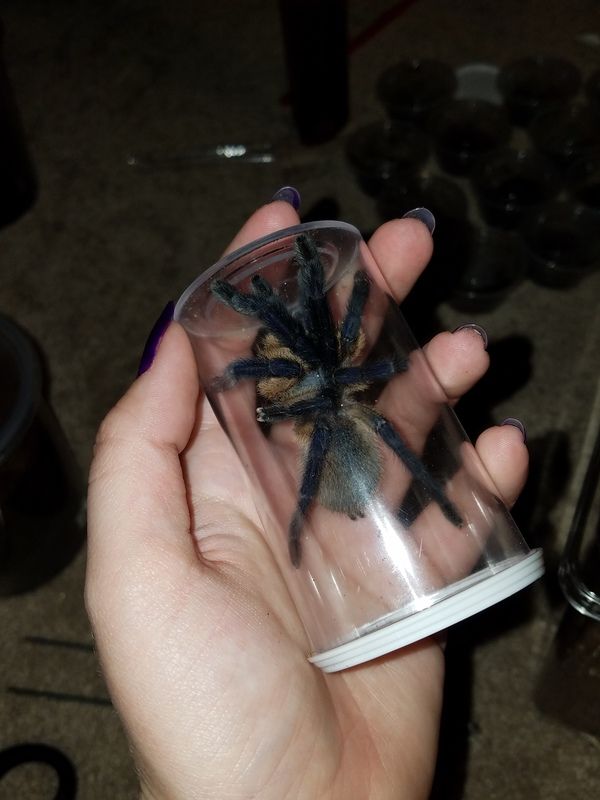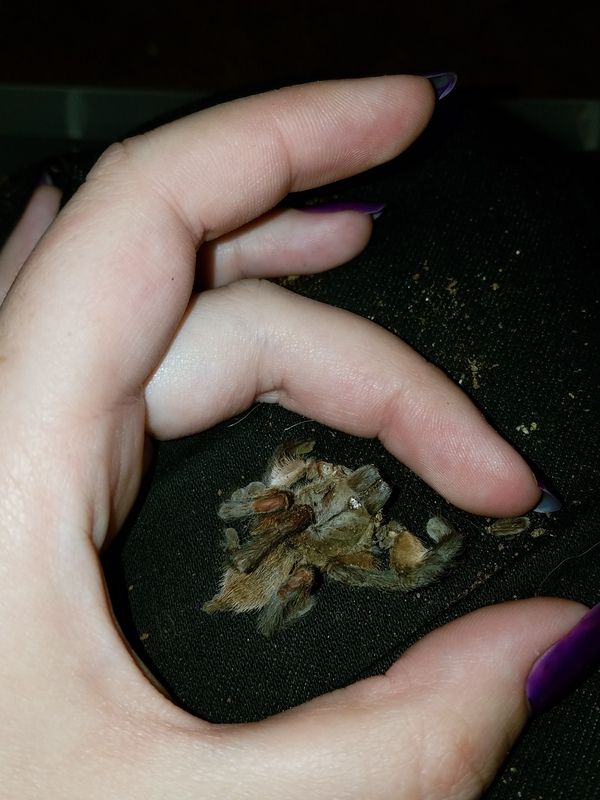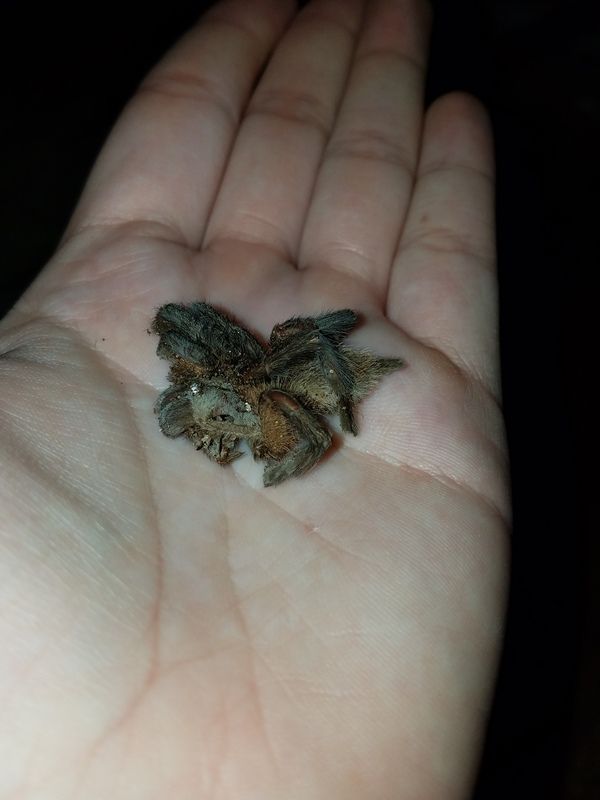- Joined
- Apr 19, 2012
- Messages
- 321
Back story:
In late 2012 / early 2013 I received a pair of Monocentropus balfouri slings and decided to keep them together. I also have a third female one who is kept separate.
Flash forward several years to today:
A local friend of mine is buying a few MM balfouri and a female. I know at least two of my three balfouri are female. The third one is unknown, because obviously if I have two together and only find female exuvia occasionally, that means one (not sure which) is female, and one is unknown. Neither of them really leave their burrow, either. They are truely a rare sight. So tonight I start digging to separate the twins so I can figure out exactly what I've got to offer this breeding project. I pull out one large, gorgeous, obviously female balfouri and get her into her new enclosure and then start digging, digging, digging. I was about to give up when suddenly, I find a small pocket in the substrate and a small, shriveled body. My OTHER BALFOURI! Dead as can be. ZZOOMMBBIIEE BALFOURI!! Upon inspection, and searching around for other legs and pedipalps, this tarantula was not a mature male. I have no idea when it passed away, and it obviously wasn't eaten, either. After speaking with some friends, we think, perhaps, it may have been overpowered by the other balfouri and she hogged all the food at it starved to death? What do you think are the odds of that and how often, if at all do you think that happens? Otherwise, I'd say it was kind of a freak thing that happened. Interesting, anyway. At least I know I have two females. And I think it's cool that even if the other balfouri was sick or dying or whatever happened to to it, it's sibling still did not eat him.
RIP little dude.
Pictures:




In late 2012 / early 2013 I received a pair of Monocentropus balfouri slings and decided to keep them together. I also have a third female one who is kept separate.
Flash forward several years to today:
A local friend of mine is buying a few MM balfouri and a female. I know at least two of my three balfouri are female. The third one is unknown, because obviously if I have two together and only find female exuvia occasionally, that means one (not sure which) is female, and one is unknown. Neither of them really leave their burrow, either. They are truely a rare sight. So tonight I start digging to separate the twins so I can figure out exactly what I've got to offer this breeding project. I pull out one large, gorgeous, obviously female balfouri and get her into her new enclosure and then start digging, digging, digging. I was about to give up when suddenly, I find a small pocket in the substrate and a small, shriveled body. My OTHER BALFOURI! Dead as can be. ZZOOMMBBIIEE BALFOURI!! Upon inspection, and searching around for other legs and pedipalps, this tarantula was not a mature male. I have no idea when it passed away, and it obviously wasn't eaten, either. After speaking with some friends, we think, perhaps, it may have been overpowered by the other balfouri and she hogged all the food at it starved to death? What do you think are the odds of that and how often, if at all do you think that happens? Otherwise, I'd say it was kind of a freak thing that happened. Interesting, anyway. At least I know I have two females. And I think it's cool that even if the other balfouri was sick or dying or whatever happened to to it, it's sibling still did not eat him.
RIP little dude.
Pictures:




